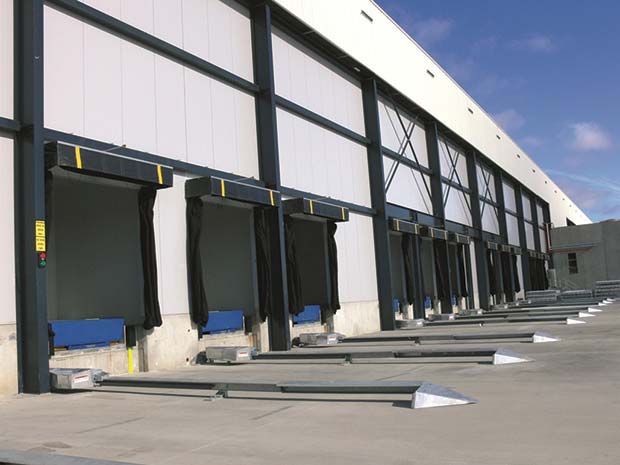Every year, there are over 5,000 accidents involving transport in the workplace, and despite the many safety improvements to equipment over recent decades, the loading bay remains one of the most dangerous parts of a warehouse, states Jonathan Bowdler, service sales manager of Pickerings Lifts Loading Systems.

He comments: “The loading area is an integral part of the logistics and distribution process where effective, properly planned and specified loading equipment can enhance the productivity of goods movement within all business environments, and its upkeep is naturally imperative to ensure maximum operational efficiency.
“The environment it sits within is constantly changing to reflect the needs of building tenants, customers and market demand, so design cannot stand still. The growth of e-commerce and online shopping for example has seen an increase in more frequent loadings of vans and smaller trucks for shorter delivery destinations, in addition to cross-dock operations for loading larger trucks for long distance distribution. A single warehouse can therefore have a multitude of distribution uses and one of the key design elements for loading bays is the flexibility to adapt to a variety of operations and vehicle types.
“With the majority of injuries being to pedestrians working around them, good housekeeping, regular servicing and maintenance and appropriate health and safety for loading bay systems are key, whilst making sure the necessary handling throughput rates are achieved too.”
Pickerings Lifts Loading Systems provides a range of loading systems from dock levellers and roller shutters to industrial sectional doors and vehicle restraints, and a comprehensive service offering, including service contracts, a 24/7 emergency call-out repair service and maintenance agreements, which is tailored to customer’s needs.
Jonathan adds: “Undoubtedly regular expert servicing is important, but there are also ways in which we can improve customer’s loading environments. These include looking at the systems they have in place such as integrating and sequencing controls from doors, docks and vehicle restraint systems, upgrading their dock loading equipment to meet new demands from wider fleet diversity.”
The areas outlined by Pickerings Lifts Loading Systems include:
• Installing dock levellers with greater working ranges and a platform thickness that is designed to manage their loads and type of materials handling equipment
• Using dock levellers with segmented lips
• Using vehicle restraints to lock a trailer at each bay and reduce the risk of vehicle creep and drive away
• Installing dedicated dock deck trailer loading bays or multi-use bays to better manage their loading arrangements
• Using Dock Management technology to capture every aspect of the loading process and keep track of dock operations, drive productivity by optimising utilisation of each bay and help plan for the future
• External hazard factors like ensuring there is adequate lighting and power, clearly-marked floor lanes designated for pedestrians, protected walkways with barriers in high traffic areas and safety signs and finally human intervention elements like quality and regular safety training and safety induction exercises for temporary workers at peak operating times.
Jonathan continues: “All these things will not only heighten health & safety, reliability and reduce accidents, but also help to improve their loading processes and improve loading efficiency, reduce downtime and energy consumption, and ultimately cost over the lifetime of the asset.”
Pickerings Lifts is the UK’s leading and largest independent lift manufacturer and celebrates its 160th anniversary in 2014. The company has a national network of eleven offices and specialises in Lift Regeneration, Lift & Access Products, Escalators, Lift Maintenance & Repair, Mobility Maintenance & Repair and Heating & Cooling Services.




Comments are closed.